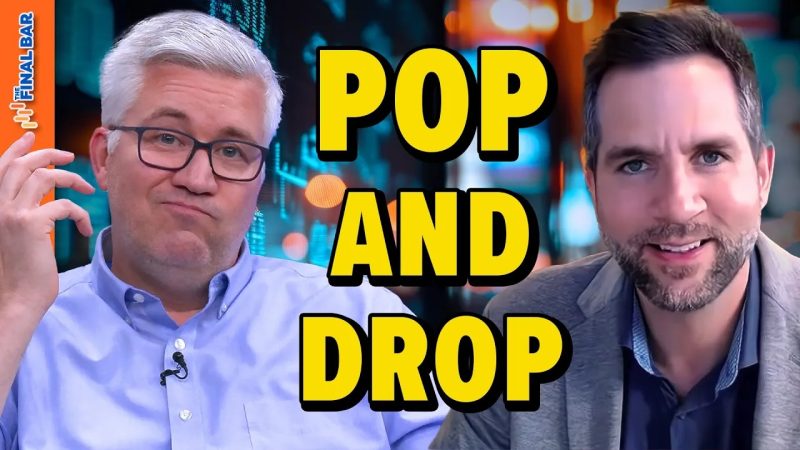Market dynamics have always been a reflection of various economic factors. One notable phenomenon that often garners attention from observers and traders alike is when the market suddenly pops upwards, only to reverse in momentum and end lower on a Federal Reserve (Fed) meeting day. This phenomenon paints a clear picture of how these macroeconomic factors, particularly monetary policy decisions, can significantly impact the market sentiment – a scenario that was vividly brought to life on a recent Fed day.
Whenever the Federal Reserve announces its federal interest rate decision—one of the key policy tools aimed at controlling inflation and managing economic growth—traders keep their eyes peeled. Depending on the decision, investors can either breathe a sigh of relief or find themselves bracing for impact.
On this particular coming Fed Day, a wave of excitement swept over the traders as the stock market graph jumped significantly, painting a scene of luscious green. It was a clear sign of a ‘market pop.’ For traders, this term signifies a short-lived rally caused by temporary factors. The pop often results in impressive short-term gains but might not always guarantee steady performance in the long run.
In this case, the driving force behind the pop was the much-anticipated decision by the Fed. The market’s anticipation of favorable news or action acts as the push bolstering the stocks. As the day progresses, the situation could change dramatically. Often, the ‘pop’ is followed by a sharp ‘drop’ in the market as traders react to the announcement.
The Fed’s announcement may not always meet the high market expectations, and therein lies the twist in the tale. That day, market participants’ initial optimism gave way to a sudden realization that the Federal policy might not be as dovish as anticipated, leading to the subsequent downturn.
The drop offers a stark contrast to the earlier vigor witnessed. Such a downturn is not a sign of the economy’s performance but rather an indicator of the market’s fear of the unknown, mainly influenced by uncertainties surrounding the actions of the Fed. The drop is also a reflection of the market’s sensitivity to how economic policies are interpreted and their potential impact on future economic scenarios.
In other words, the market pop followed by the drop encapsulates the emotional roller coaster traders often find themselves on during a Fed day. This roller coaster is reflective of the dramatic shift from initial anticipation to the actual aftermath.
However, neither the market pop nor the drop indicates a long-term view of the market. Traders and investors need to remember that these fluctuations are a part of the dynamic nature of the exchange. Although arguments may exist suggesting that the short-term market direction can sometimes forecast longer-term trends, these movements mainly underscore the market’s short-term anxiety or relief.
In conclusion, the Federal Reserve’s policy decisions can significantly impact market behavior, typically seen as an initial market pop followed by a sharp drop as the traders assimilate and react to the decisions announced. This phenomenon offers valuable insights into market sentiment and the symbiotic relationship between monetary policy and the stock market, making Fed Day an exciting event to track for both traders and economists.




